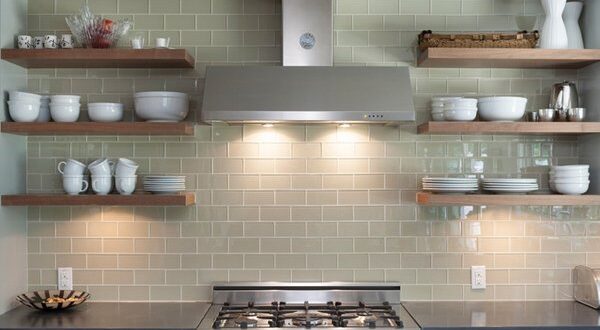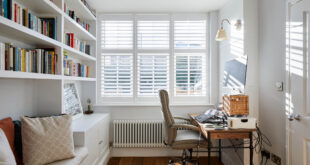body { font-family: Arial, sans-serif; line-height: 1.6; }
h2 { color: #333; }
h3 { color: #666; }
img { max-width: 100%; height: auto; }
.container { width: 80%; margin: 0 auto; }
Floating Shelves Kitchen Ideas: A Stylish & Practical Guide for 2024
The kitchen, often hailed as the heart of the home, is more than just a space for cooking; it’s a gathering place, a creative hub, and a reflection of personal style. And in recent years, the demand for kitchens that are both functional and aesthetically pleasing has soared. One design element that effortlessly marries these qualities is the floating shelf. Forget bulky cabinets that can make a kitchen feel cramped. Floating shelves offer an open, airy alternative, providing ample storage while adding a touch of modern elegance. But with so many options available, how do you choose the right floating shelves and incorporate them seamlessly into your kitchen design? This comprehensive guide will explore a plethora of floating shelf kitchen ideas, covering everything from materials and styles to placement and décor, ensuring your kitchen achieves both style and practicality.
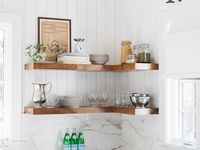
Why Choose Floating Shelves for Your Kitchen?
Before diving into the specifics, let’s discuss the compelling reasons to opt for floating shelves in your kitchen:
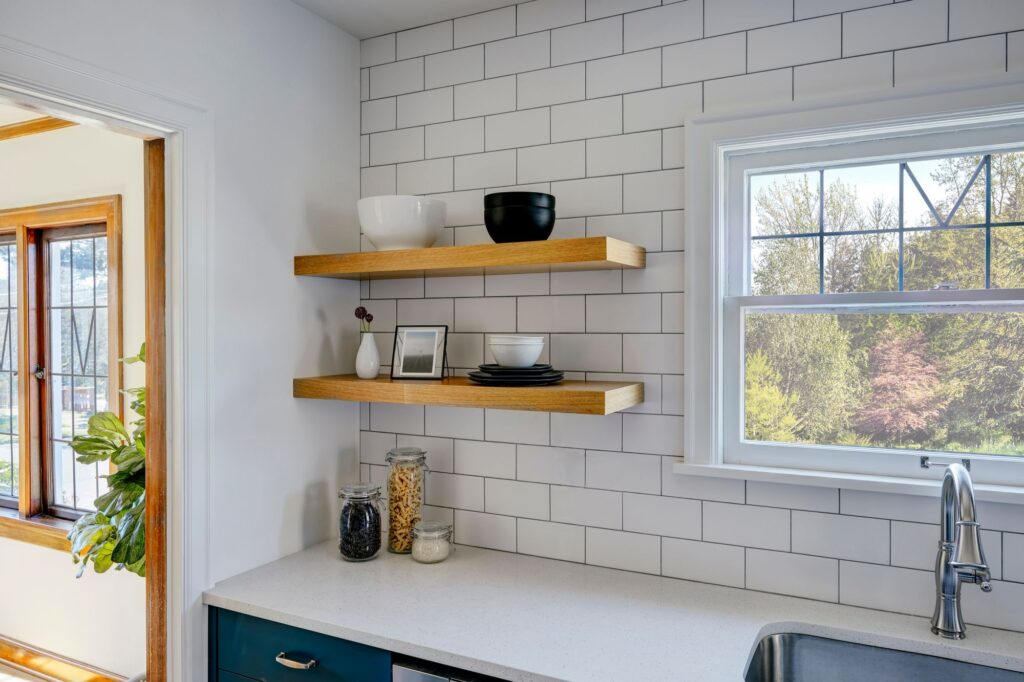
- Enhanced Aesthetics: Floating shelves create a clean, minimalist look, adding a touch of contemporary elegance to any kitchen style. They offer a visual lightness that traditional cabinets simply can’t match.
- Space Optimization: Ideal for small kitchens, floating shelves maximize vertical space without overwhelming the area. They allow you to utilize wall space effectively, freeing up valuable counter space.
- Open and Airy Feel: By replacing bulky cabinets with open shelving, you create a more open and airy atmosphere. This is particularly beneficial in smaller kitchens, where every inch of space counts.
- Display Opportunities: Floating shelves are perfect for showcasing your favorite dishes, cookbooks, plants, or decorative items, adding a personal touch to your kitchen.
- Accessibility: Everything on your floating shelves is easily accessible, making it convenient to grab ingredients or utensils while cooking. No more rummaging through cluttered cabinets!
- Cost-Effective: In many cases, floating shelves can be a more affordable option compared to custom cabinets, making them a budget-friendly way to upgrade your kitchen.
Choosing the Right Materials for Your Floating Shelves
The material you choose for your floating shelves will significantly impact their appearance, durability, and overall suitability for your kitchen. Here’s a rundown of popular options:
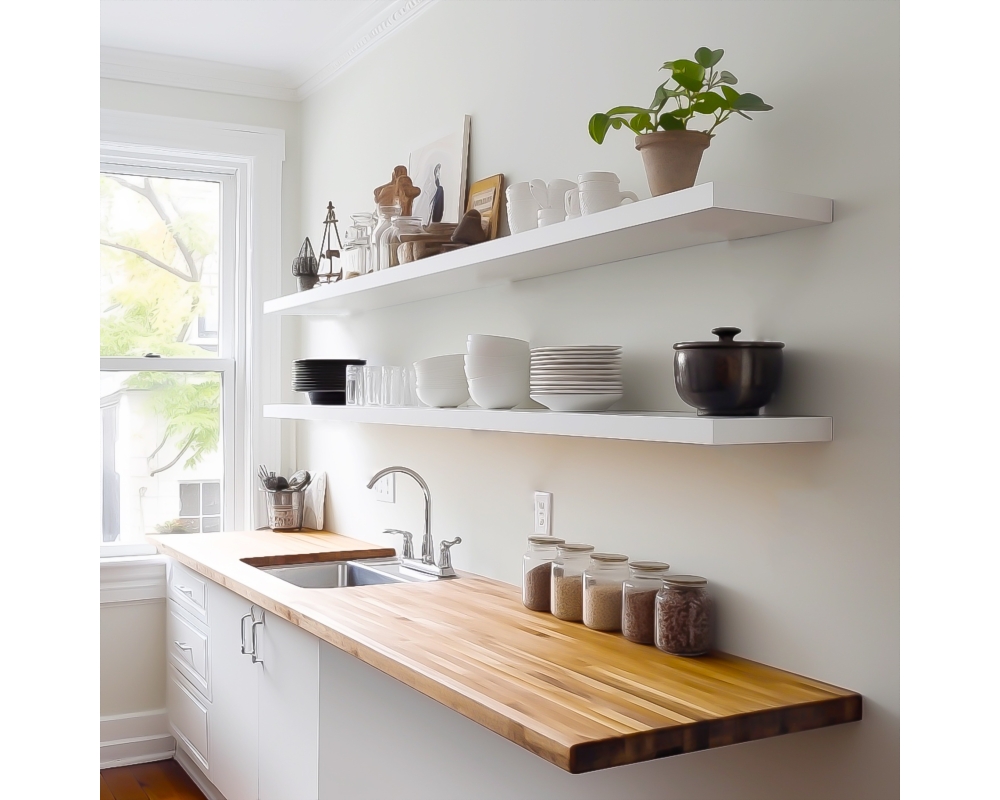
- Wood: Wood is a classic choice, offering warmth, natural beauty, and versatility. Different wood types offer varied looks and durability.
- Solid Wood: Durable and timeless, solid wood shelves can be stained or painted to match your kitchen décor. Consider options like oak, maple, walnut, or cherry.
- Reclaimed Wood: For a rustic or farmhouse-style kitchen, reclaimed wood shelves add character and charm. Each piece is unique, with its own history and imperfections.
- Engineered Wood (Plywood, MDF): More affordable than solid wood, engineered wood shelves are stable and can be finished to mimic the look of real wood. They are a good option if you plan to paint the shelves.
- Metal: Metal shelves offer a sleek, industrial look. They are durable, easy to clean, and resistant to moisture and heat. Stainless steel and wrought iron are popular choices.
- Glass: Glass shelves provide a modern, minimalist aesthetic. They are ideal for displaying delicate items and can make a small kitchen feel more spacious. However, they require more frequent cleaning to maintain their pristine appearance.
- Laminate: Laminate shelves are an affordable and practical option. They are available in a wide range of colors and finishes, making it easy to match your kitchen décor. They are also easy to clean and maintain.
Factors to Consider When Choosing Materials:
- Kitchen Style: The material should complement the overall style of your kitchen. For example, wood shelves are perfect for farmhouse or traditional kitchens, while metal shelves are better suited for modern or industrial kitchens.
- Durability: Consider the weight and type of items you plan to store on the shelves. If you need to store heavy items, opt for durable materials like solid wood or metal.
- Maintenance: Some materials, like glass and metal, require more frequent cleaning than others. Choose a material that fits your lifestyle and cleaning habits.
- Budget: Material costs can vary significantly. Set a budget before you start shopping and choose materials that fit within your financial constraints.
Styles of Floating Shelves to Suit Your Kitchen’s Aesthetic
Once you’ve chosen your materials, it’s time to consider the style of floating shelves that best suits your kitchen’s aesthetic. Here are a few popular options:
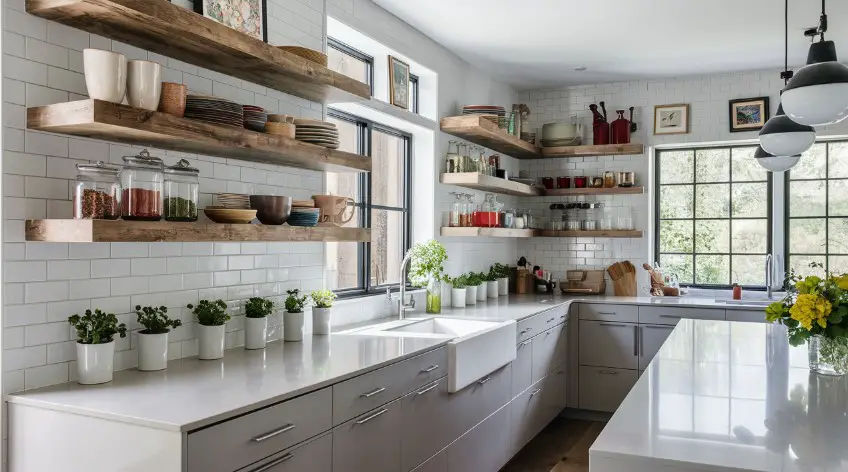
- Minimalist Shelves: These shelves are sleek, simple, and understated. They typically have a clean, straight edge and are available in a variety of materials, including wood, metal, and glass. They work well in modern and contemporary kitchens.
- Rustic Shelves: Rustic shelves are made from reclaimed wood or distressed materials. They feature imperfections, such as knots, cracks, and uneven edges, adding character and charm to the kitchen. They are perfect for farmhouse and country-style kitchens.
- Industrial Shelves: Industrial shelves combine metal and wood elements, creating a raw, edgy look. They often feature exposed brackets and hardware, adding to their industrial appeal. They are well-suited for urban and loft-style kitchens.
- Modern Shelves: Modern shelves are characterized by clean lines, geometric shapes, and innovative materials. They may feature hidden brackets or floating designs, creating a seamless and sophisticated look. They are ideal for contemporary and minimalist kitchens.
- Corner Shelves: Corner shelves are designed to fit into corners, maximizing space in small kitchens. They can be used to store cookbooks, spices, or decorative items.
Floating Shelf Placement: Maximizing Functionality and Style
The placement of your floating shelves is crucial for both functionality and aesthetics. Here are some key considerations:
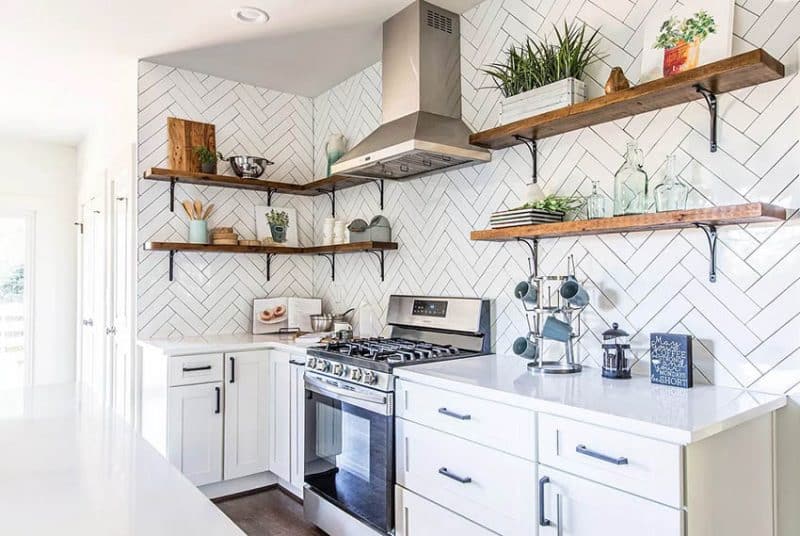
- Above the Countertop: Placing floating shelves above the countertop is a popular option, providing easy access to frequently used items like spices, oils, and utensils. Make sure to leave enough clearance between the countertop and the shelves to avoid obstructing your workspace.
- Next to the Stove: Installing floating shelves next to the stove can be convenient for storing cooking essentials like salt, pepper, and cooking oils. However, be mindful of heat and grease, and choose materials that are easy to clean.
- Above the Sink: Floating shelves above the sink can be used to store dish soap, sponges, and other cleaning supplies. They can also be a great place to display small plants or decorative items.
- In a Corner: Corner shelves are an excellent way to maximize space in small kitchens. They can be used to store cookbooks, spices, or decorative items.
- As a Display Feature: Floating shelves can be used as a display feature to showcase your favorite dishes, cookbooks, plants, or artwork. Consider creating a gallery wall of floating shelves to add visual interest to your kitchen.
Height and Spacing:
- Consider your height: The lowest shelf should be easily accessible without straining.
- Spacing between shelves: Allow enough space between shelves to accommodate the items you plan to store. Taller items will require more vertical space. Aim for at least 12-15 inches between shelves for general use.
- Maintain consistency: If using multiple shelves, maintain a consistent spacing for a clean, organized look.
Decorating Your Floating Shelves: Creating a Visually Appealing Display
Once your floating shelves are installed, it’s time to decorate them! Here are some tips for creating a visually appealing and functional display:
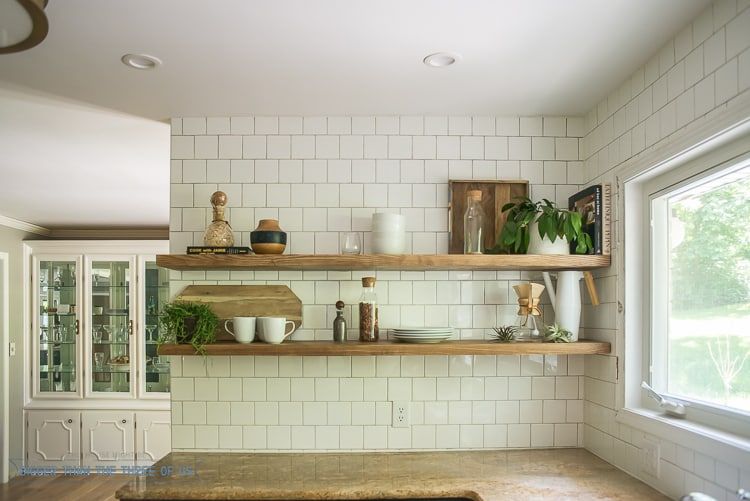
- Start with a Focal Point: Choose one or two statement pieces to serve as focal points on your shelves. This could be a large vase, a piece of artwork, or a unique kitchen gadget.
- Group Items in Odd Numbers: Grouping items in odd numbers (e.g., three, five, or seven) tends to be more visually appealing than grouping them in even numbers.
- Vary Heights and Shapes: Mix items of different heights and shapes to create visual interest. Place taller items towards the back and shorter items towards the front.
- Add Greenery: Incorporating plants or herbs can add a touch of freshness and life to your kitchen. Choose plants that thrive in indirect sunlight, such as succulents, ferns, or herbs like basil and mint.
- Use Baskets and Containers: Baskets and containers can be used to store smaller items, such as spices, tea bags, or coffee pods. They also add texture and visual interest to your shelves.
- Incorporate Color: Use color to tie your shelves into the overall color scheme of your kitchen. This could be done through the items you display, such as colorful dishes or cookbooks.
- Leave Some Empty Space: Don’t overcrowd your shelves! Leaving some empty space allows your items to breathe and creates a more visually balanced display.
Practical Decorating Ideas:
- Cookbooks: Arrange cookbooks by color or size for a visually appealing and organized display.
- Dishes and Bowls: Showcase your favorite dishes and bowls, mixing different colors and textures.
- Jars and Canisters: Use clear jars and canisters to store dry goods like pasta, rice, and beans. Label them neatly for easy identification.
- Kitchen Utensils: Display your favorite kitchen utensils in a stylish holder or crock.
- Cutting Boards: Lean cutting boards against the wall for a rustic and practical display.
Floating Shelves in Different Kitchen Styles
Floating shelves are incredibly versatile and can be incorporated into a variety of kitchen styles. Here are a few examples:
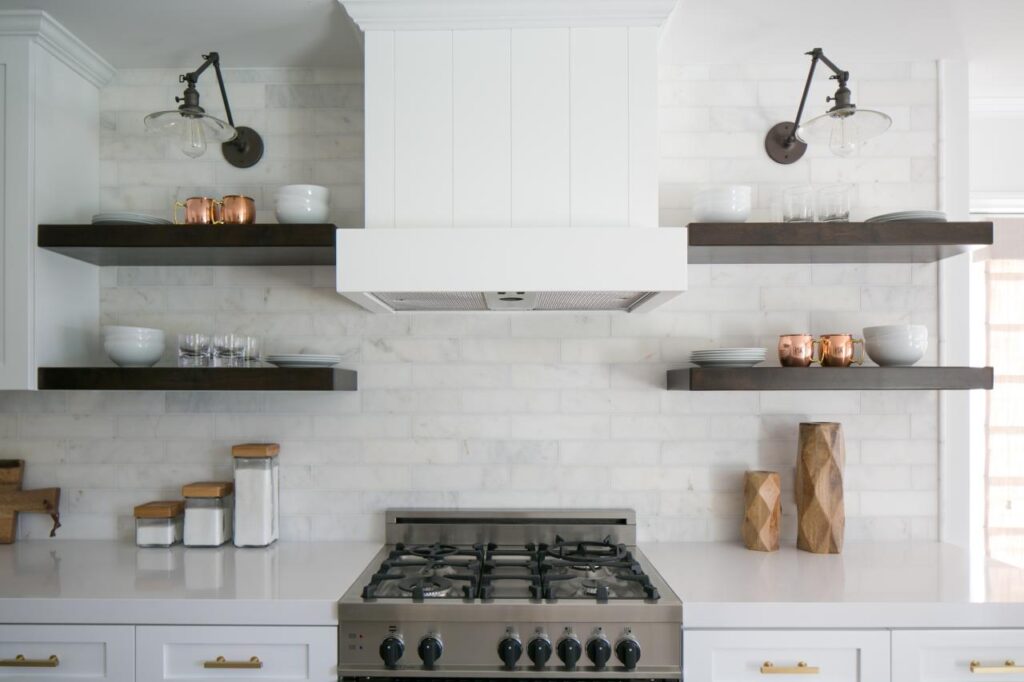
- Modern Kitchens: In modern kitchens, opt for sleek, minimalist floating shelves made from materials like metal, glass, or engineered wood. Choose neutral colors like white, gray, or black for a sophisticated look.
- Farmhouse Kitchens: For farmhouse kitchens, choose rustic floating shelves made from reclaimed wood. Incorporate vintage-inspired décor, such as mason jars, enamelware, and antique scales.
- Industrial Kitchens: In industrial kitchens, combine metal and wood elements to create a raw, edgy look. Use exposed brackets and hardware for an authentic industrial feel.
- Bohemian Kitchens: For bohemian kitchens, embrace eclectic and colorful décor. Mix and match different patterns, textures, and materials. Incorporate plants, macramé hangings, and vintage finds.
- Minimalist Kitchens: In minimalist kitchens, less is more. Choose simple, understated floating shelves in neutral colors. Keep the shelves clutter-free and focus on functionality.
DIY Floating Shelves: A Budget-Friendly Option
If you’re on a budget, consider building your own floating shelves. DIY floating shelves can be a fun and rewarding project, allowing you to customize the size, style, and materials to suit your specific needs and preferences.
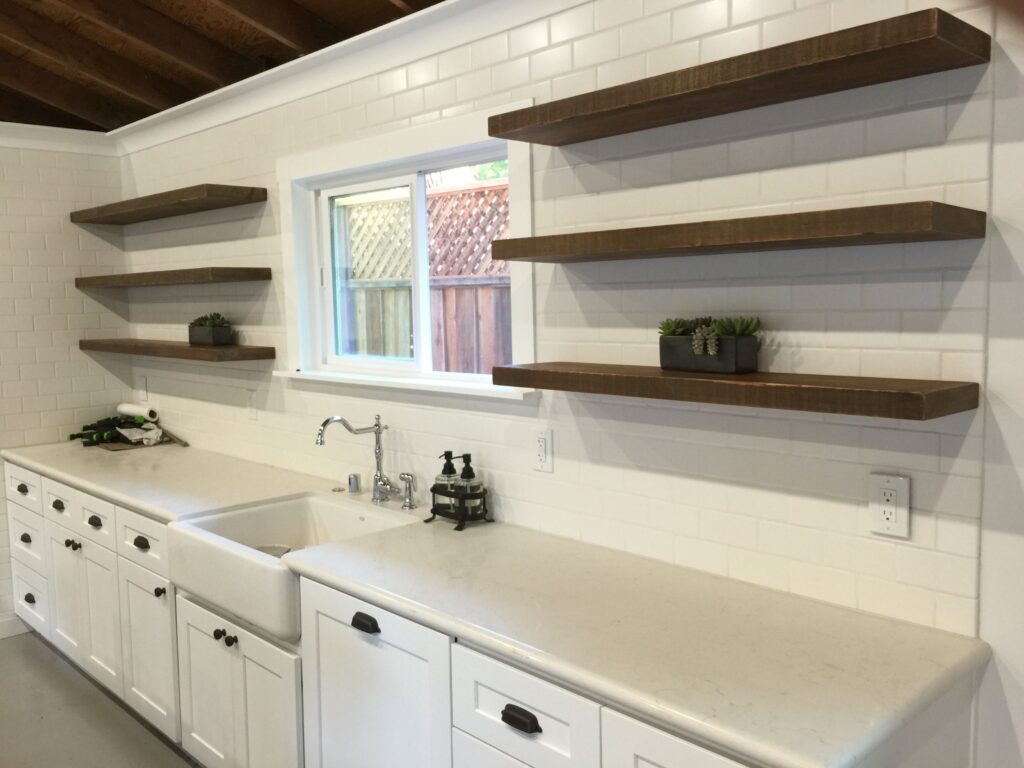
Materials You’ll Need:
- Wood planks (choose your preferred type and thickness)
- Floating shelf brackets (heavy-duty brackets are recommended)
- Screws
- Wood glue
- Sandpaper
- Wood stain or paint (optional)
- Drill
- Level
- Measuring tape
Instructions:
- Measure and Cut the Wood: Measure and cut the wood planks to the desired length and width.
- Sand the Wood: Sand the wood planks to smooth out any rough edges.
- Stain or Paint the Wood: If desired, stain or paint the wood planks to match your kitchen décor.
- Attach the Brackets: Attach the floating shelf brackets to the wall using screws. Use a level to ensure the brackets are straight and even.
- Slide the Shelves onto the Brackets: Slide the wood planks onto the floating shelf brackets.
- Secure the Shelves: Secure the shelves to the brackets using screws.
Important Note: When installing floating shelves, it’s crucial to ensure they are properly supported to prevent them from sagging or falling. Use heavy-duty brackets and secure them to wall studs whenever possible. If you’re unsure about your ability to install floating shelves safely, consult a professional.
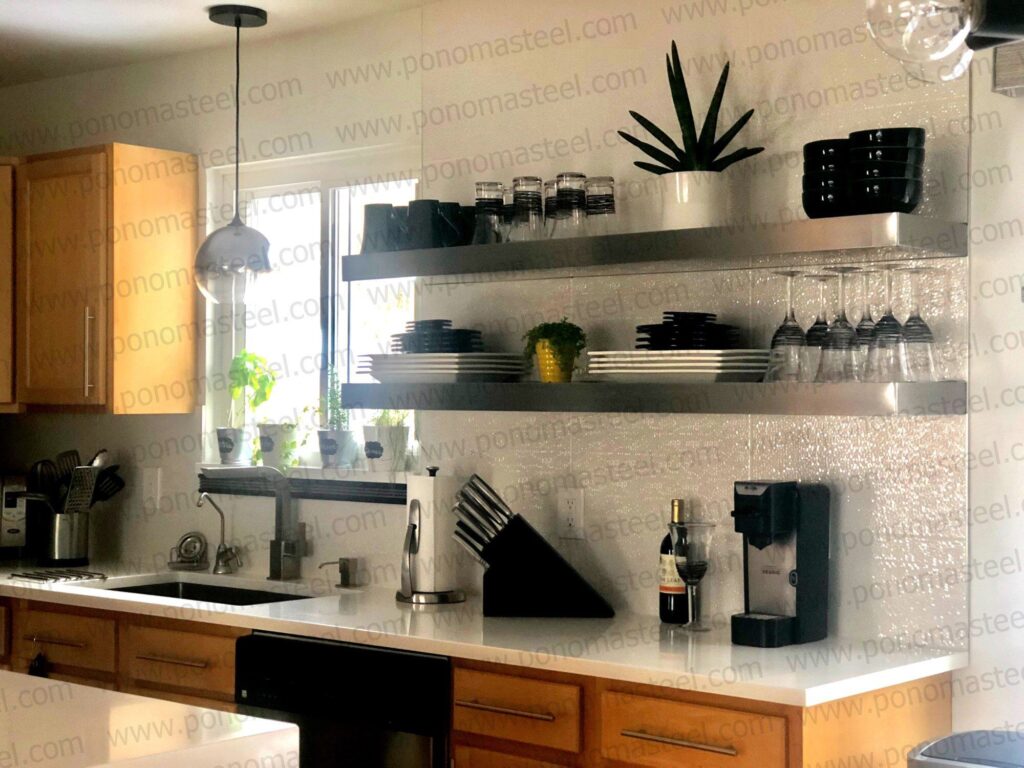
Common Mistakes to Avoid When Using Floating Shelves
While floating shelves can be a stylish and practical addition to your kitchen, it’s important to avoid these common mistakes:
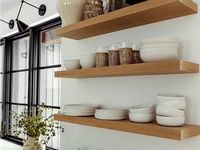
- Overloading the Shelves: Overloading floating shelves can cause them to sag or even collapse. Be mindful of the weight capacity of your shelves and avoid placing excessively heavy items on them.
- Incorrect Installation: Incorrect installation is a common cause of floating shelf failure. Make sure to use heavy-duty brackets and secure them to wall studs whenever possible.
- Choosing the Wrong Materials: Choosing the wrong materials can result in shelves that are not durable or suitable for your kitchen environment. Consider the weight and type of items you plan to store on the shelves, as well as the overall style of your kitchen.
- Neglecting Maintenance: Floating shelves require regular cleaning and maintenance to keep them looking their best. Dust them regularly and clean up any spills or stains promptly.
- Cluttering the Shelves: Cluttered shelves can look messy and disorganized. Keep your shelves clutter-free by storing only essential items and displaying them in a visually appealing way.
Beyond the Kitchen: Floating Shelves Throughout the Home
While this guide focuses on kitchen applications, the beauty of floating shelves is their versatility. Consider using them in other areas of your home:
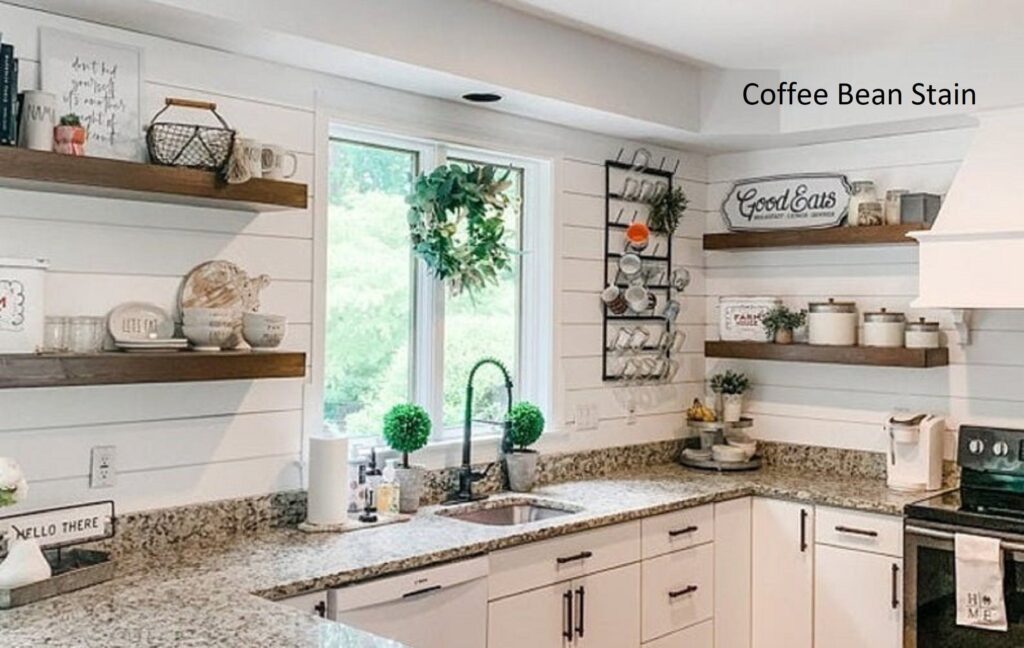
- Living Room: Display books, artwork, and decorative objects.
- Bedroom: Use as bedside tables or to display personal items.
- Bathroom: Store toiletries, towels, and decorative items.
- Home Office: Organize books, supplies, and electronics.
Conclusion: Elevate Your Kitchen with Floating Shelves
Floating shelves are a versatile and stylish design element that can transform your kitchen into a functional and visually appealing space. By carefully considering the materials, styles, placement, and décor, you can create a kitchen that reflects your personal style and meets your specific needs. Whether you’re looking to maximize space, create an open and airy atmosphere, or simply add a touch of modern elegance, floating shelves are an excellent choice. So, embrace the possibilities and elevate your kitchen with the beauty and practicality of floating shelves!
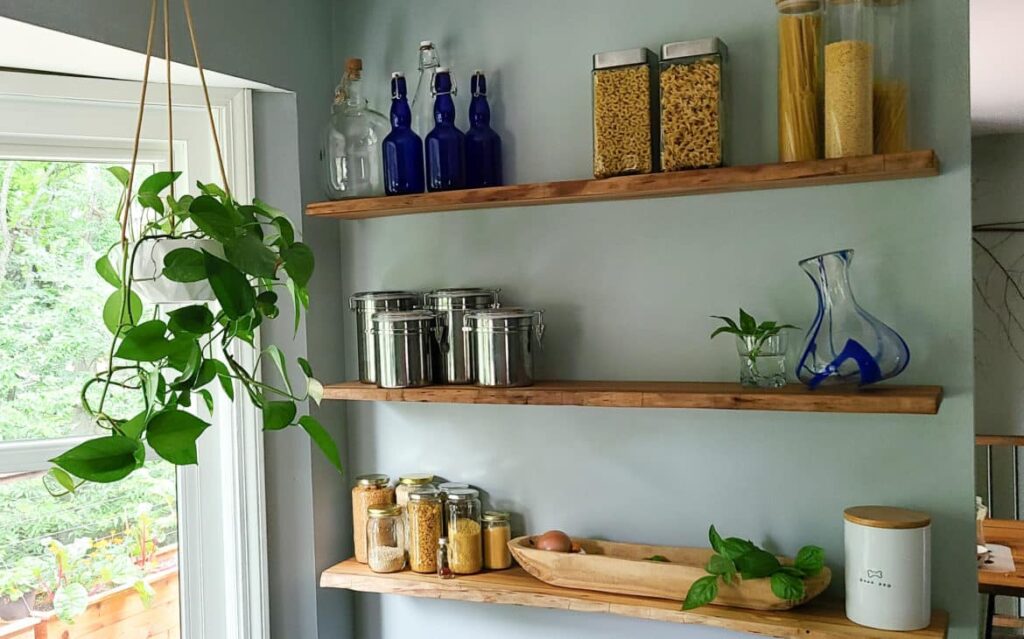
From showcasing cherished cookbooks to providing easy access to everyday essentials, floating shelves offer a unique blend of form and function. They’re a blank canvas for your creativity, allowing you to curate a space that is both practical and beautiful. As you embark on your floating shelf journey, remember that the key is to balance aesthetics with utility. Don’t be afraid to experiment with different arrangements and décor styles until you find what works best for you and your kitchen. With a little planning and creativity, you can transform your kitchen into a haven of both culinary delight and visual harmony.
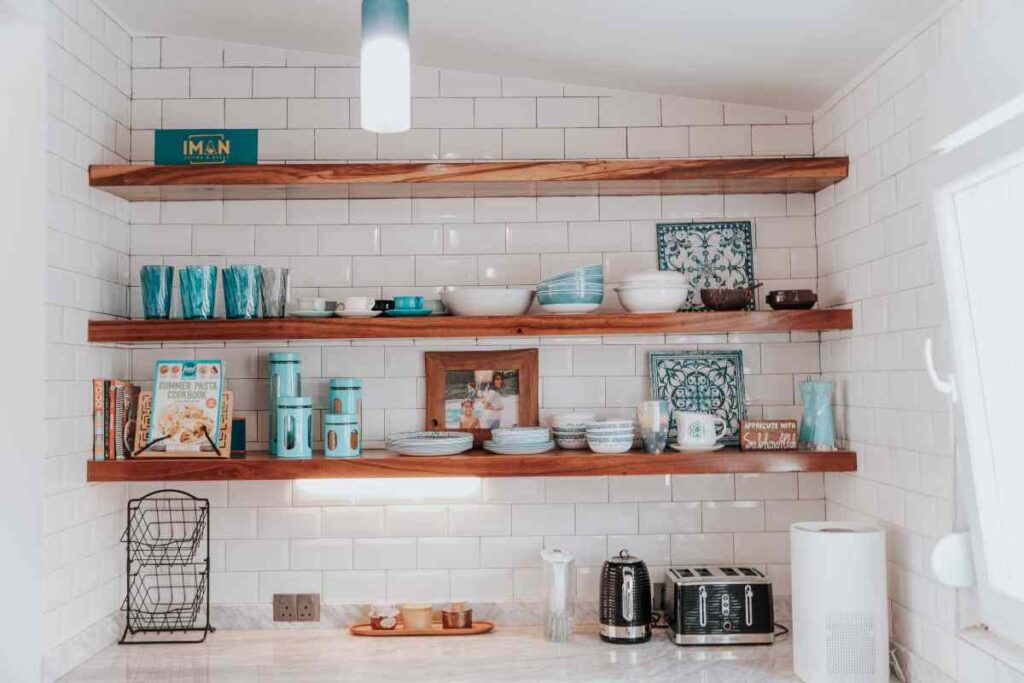
Ultimately, the best floating shelf kitchen ideas are those that seamlessly blend with your lifestyle and personal preferences. So, take inspiration from the ideas presented here, but don’t be afraid to add your own unique touch. After all, your kitchen should be a reflection of you.
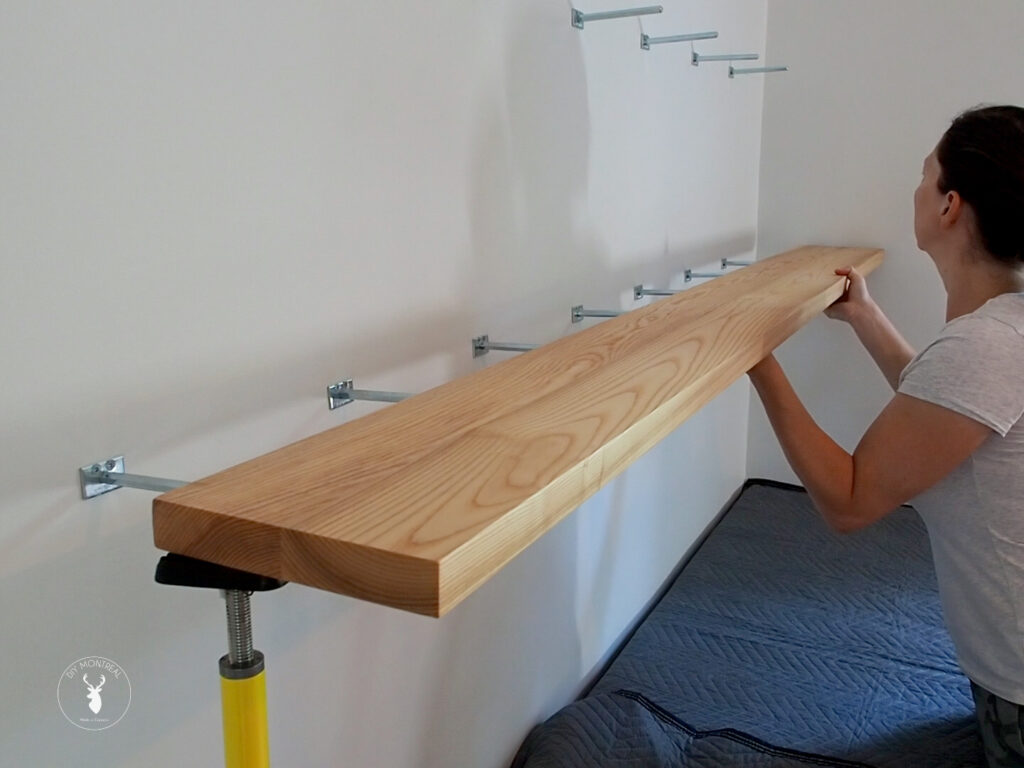
 Nimila
Nimila
